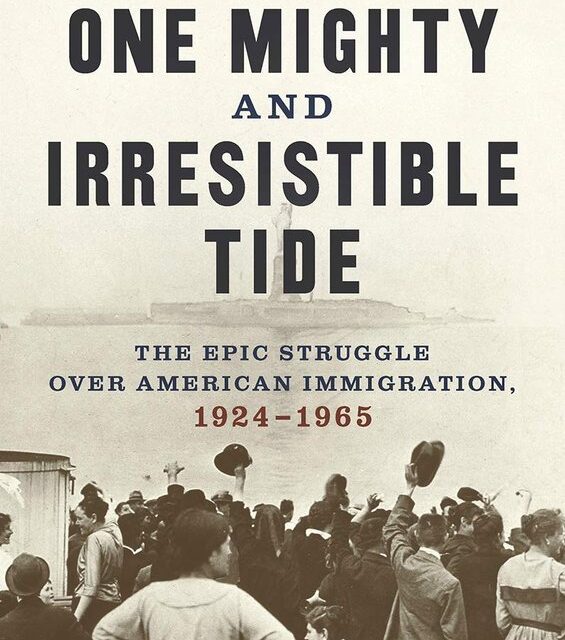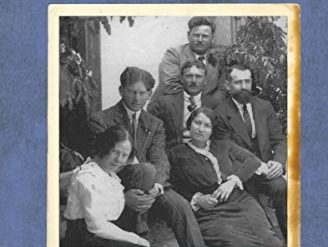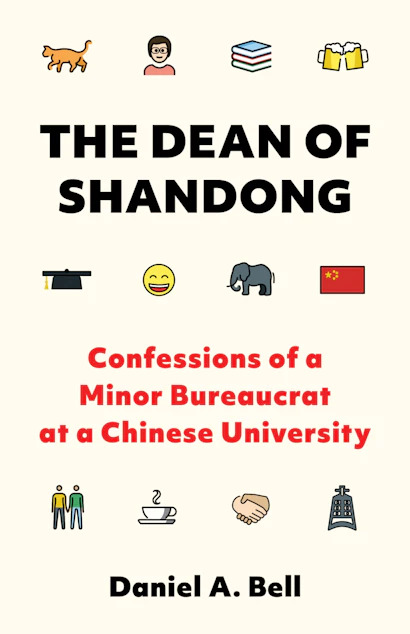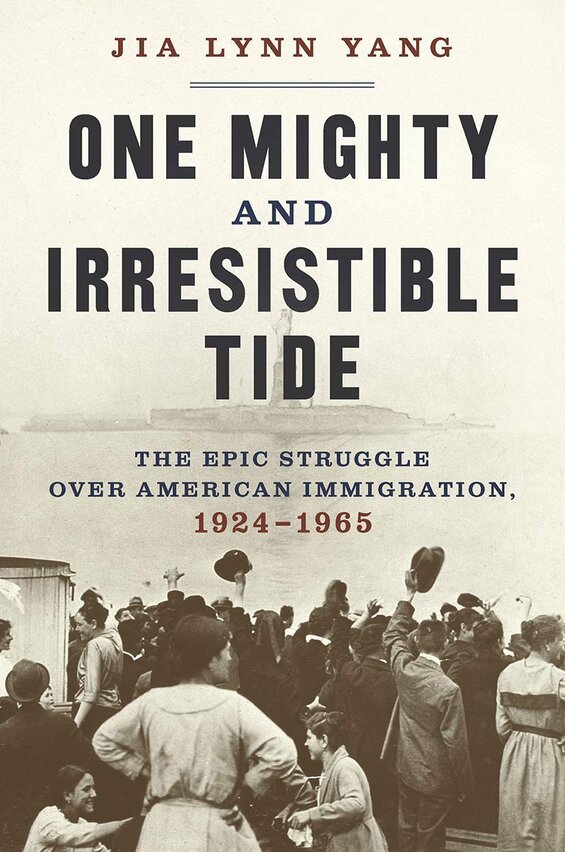
On as many as a dozen occasions in the course of the twentieth century, the United States Congress attempted to write the rules for immigration. Twice the result was major legislation signed by the President. The first was in 1924, with the passage of a racist bill that strangled the flow of immigrants for four decades. The second passed in 1965, reopening the floodgates. One law sharply reduced the percentage of foreign-born residents. The other dramatically increased it once again—and, in the process, changed America’s ethnic composition. Now, in One Mighty and Irresistible Tide, journalist Jia Lynn Yang traces the history of that second bill. Her account casts light on today’s immigration debate. It’s both eye-opening and timely.
A contentious issue for two centuries
Immigration has been a touchy issue in America for two centuries. In the 1840s and 50s, the potato famine in Ireland and the failed revolutions of 1848 forced a million Europeans to flee to the United States. Most spoke Gaelic or German and today would be considered White. But they did not feel welcome in nineteenth-century America. A second and larger wave of immigrants landed beginning in the 1890s. They came from southern and eastern Europe, chiefly Russia, Italy, and Hungary. Many were Jews. But Italians and Jews alike confronted a wall of prejudice. Today’s race hatred and widespread anti-immigrant feeling is little different. Only the objects of scorn are different. Now, they’re Mexican, Central American, Chinese, Korean, and Indian. And the origins of today’s fractious debate over admitting new Americans lie in the Immigration and Nationality Act of 1965.
As Yang points out, “It is only from a comfortable distance, in white America, that different immigrant groups can appear to have easy, natural alliances with one another. In reality, there have often been intergroup conflicts, sometimes violent, over jobs, housing, and political representation.”
One Mighty and Irresistible Tide: The Epic Struggle Over American Immigration, 1924-1965 by Jia Lynn Yang (2021) 331 pages ★★★★★
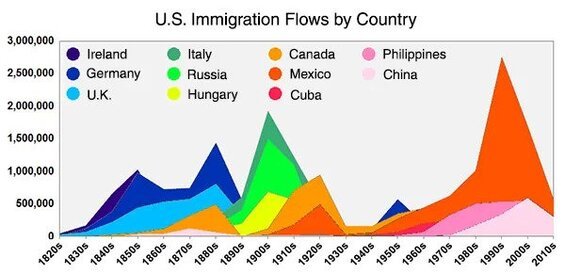
Contrasting the motivation for the two laws
Yang shows how each of the two major immigration laws was grounded in the governing obsession of its time. In the 1920s, she writes, looking back from the 1950s, “immigration debates had centered on the struggle to control the race and nationality of Americans.” Then, the pseudo-science of eugenics held sway. Members of Congress were “guided by the fear that the United States had to maintain a certain ethnic makeup to protect its democracy. Concerns over Communist infiltration by immigrants had played a supporting role in passing the 1924 law. Now they were taking center stage.” The immigration debate had shifted focus. But the opponents of reform remained resolute in their desire to keep the entry of immigrants to a minimum.
The architects of the 1965 immigration law
In One Mighty and Irresistible Tide, Yang celebrates the leadership of a handful of persistent and often courageous politicians whose work ultimately led to the adoption of the landmark 1965 immigration law. The fight to repeal the noxious “country of origins” formula baked into the 1924 legislation went on for two decades, from the end of World War II to the mid-1960s. The reason, as Yang reveals, was that “more immigrants entered the country in the first decade of the twentieth century than between 1931 and 1971.” That reality was sustained by obstructionism led by two cranky reactionaries, Senator Pat McCarran (1876-1954) of Nevada and Ohio Congressman Michael Feighan (1905-92). The two held key posts that permitted them to choke off efforts for reform for many years. But in the end the weight of history, and the skills of their adversaries, won the day.
Key players in the immigration debate
Among those who played pivotal roles in moving the country toward the 1965 reform were Herbert Lehman (1978-1963), Earl Harrison (1899-1955), and Walter Judd (1898-1994).
- Lehman was Governor of New York throughout the New Deal and a Senator representing the state in the US Senate from 1949 to 1957. In a 1952 radio address, the former partner in Lehman Brothers helped bring the issue of immigration back into the public debate by highlighting the inequities of the law then in force. And he fought doggedly against McCarran and Feighan’s unrelenting campaign to stifle efforts for change.
- Harrison served as US Commissioner of Immigration and Naturalization during World War II and reformed the agency during this tenure. He was instrumental in persuading President Harry Truman to address the problems of displaced persons, many of them Jewish refugees, following the war. His work remained influential long after his death in 1955.
- Congressman Walter Judd, a former medical missionary in China, served as a Republican from Minnesota from 1943 to 1963. He was an internationalist who worked closely with President Truman to support the United Nations, the Marshall Plan, NATO, and foreign aid.
Emmanuel Celler
But more than any other individual, Congressman Emmanuel Celler (1888-1981) emerges as the hero of Yang’s story. The long-serving Representative from Brooklyn and Queens served on Capitol Hill for nearly fifty years, from 1923 to 1973. He was a Democrat, a Jew, and the grandson of immigrants from Germany. Celler led an often lonely fight for less restrictive immigration polices from the time in 1924 when he inveighed against the Johnson-Reed Immigration Act of 1924 in his first major speech in the House.
By 1949, however, he had risen to the chairmanship of the House Judiciary Committee. Celler served in that post for all but two years until 1973. He was instrumental in the passage of the Civil Rights Acts of 1964 and 1968 and the Voting Rights Act of 1965. Finally, in 1965 he drafted and managed the adoption of the Hart-Celler Act of 1965, which eliminated the racist national origins formula as a factor in immigration.
Three US Presidents
But three United States Presidents played central and ultimately decisive roles in the decades-long immigration debate. Harry Truman (in office 1945-1953) was the first President to advocate lowering the barriers to immigration and eliminating the “national origins” limits. John F. Kennedy (1961-63) “and his brothers Ted and Bobby became champions for immigration reform as they tried to win over white ethnic voters.” And Lyndon Johnson (1963-69) weighed into the battle for immigration reform with his usual combination of charm and arm-twisting. The former Senate majority leader played a central role in the passage of the Hart-Celler Act, which he signed into law on October 3, 1965.
About the author

Jia Lynn Yang is the National Editor of the New York Times. According to the book’s publisher, she “was previously deputy national security editor at The Washington Post, where she was part of a team that won a Pulitzer Prize for coverage of Trump and Russia. She lives in Brooklyn, New York. In her website, she discloses that her “family immigrated to the United States from Taiwan in the 1970s and was able to stay in the country thanks to the 1965 Immigration and Nationality Act.”
For more reading
This is one of The best books of 2021.
For another excellent book on the history of immigration in America, see The Guarded Gate: Bigotry, Eugenics, and the Law That Kept Generations of Jews, Italians, and Other European Immigrants Out of America by Daniel Okrent (The racist movement that stopped immigration a century ago). Okrent’s book describes the anti-immigrant agitation that led to the passage of the restrictive 1924 law on immigration that serves as the jumping-off point for Yang’s account.
You might also be interested in the Top 20 popular books for understanding American history.
And you can always find my most popular reviews, and the most recent ones, plus a guide to this whole site, on the Home Page.

